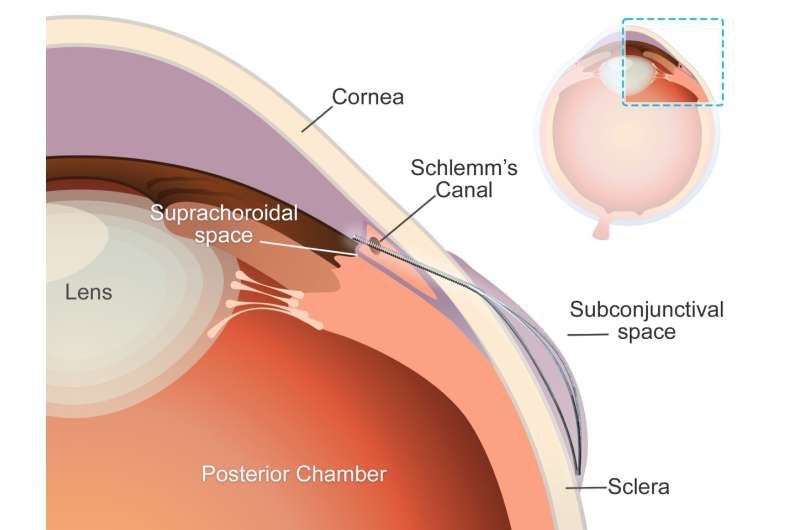Glaucoma is a leading cause of vision loss, second only to cataracts. Globally, 7.7 million people were blind or visually impaired due to glaucoma in 2020. The condition can cause irreversible damage to the optic nerve, due to increased pressure within the eyeball. Current treatment options—principally surgery to create openings in the eye or insert tubes to drain fluid—are highly invasive, carry risk of complications, and have limited durability.
“Our deployable microstent represents a significant advancement in glaucoma treatment,” said lead author Dr. Yunlan Zhang (University of Oxford at the time of the study/University of Texas). “Current surgical implants for this type of glaucoma have been shown to have limited long-term effectiveness, being susceptible to failure due to fibrosis (scarring) in the eye.”
The new microstent features a unique structural shape that allows it to expand once in the eye. At 200µm, less than a quarter of a millimeter, the stent’s tiny diameter enables it to fit within the needle of a standard hypodermic syringe, for minimally-invasive insertion. Once in place and expanded, the microstent spans the fluid-filled space between the white of the eye and the membrane that covers it.

